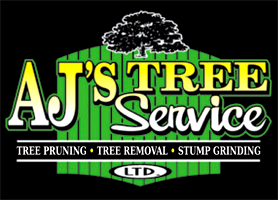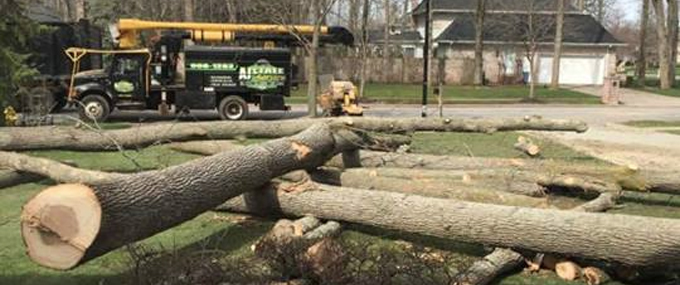Dangerous trees that pose immediate threats during emergencies require skillful handling and prompt action. Imagine a tree, weakened by disease or storm damage, leaning ominously over your cherished family home or blocking your only exit route—it’s a crisis waiting to happen. In this blog post, we’ll peek into the know-how of safely removing life-threatening trees during emergencies. A must-read for all homeowners, especially those living close to giant green giants, who need to act smartly before nature takes an unpredictable turn. Read on; your solution may just be a scroll away!
Emergency Tree Removal When Damage Occurs
When a storm or severe weather event strikes, it can cause significant damage to trees, posing a danger to nearby structures and individuals. In such situations, immediate action is crucial to ensure the safety of those affected and prevent further harm. Professional emergency tree removal services should be contacted promptly to handle the situation safely and efficiently.
Safely removing dangerous trees during an emergency is crucial to prevent further damage and ensure the safety of individuals affected by fallen or damaged trees. It is not recommended for individuals to attempt tree removal themselves, as storm-damaged trees can react in unpredictable and dangerous ways. Professional emergency tree services should be contacted instead.
Let’s say a severe thunderstorm causes a large tree near a residential area to uproot, leaning precariously towards houses and power lines. In this scenario, attempting to remove the tree on your own could lead to serious accidents or injuries, not to mention potential damage to surrounding properties. It’s best to leave this task in the hands of professionals who have the necessary skills, experience, and specialized equipment for safe and efficient tree removal.
So what can you expect when professional emergency tree removal services are called in? First, they will assess the situation and determine the most appropriate course of action. This assessment involves evaluating factors such as the stability of the damaged tree, its proximity to buildings or power lines, and any potential risks involved in removing it swiftly.
Once a plan is formulated, skilled climbers or crane operators will carefully execute the removal process. Specialized equipment such as ropes, pulleys, chainsaws, and cranes may be utilized to dismantle the tree piece by piece. By strategically cutting away branches and sections of the trunk from top to bottom, they can systematically bring down the tree without causing further destruction.
Addressing damaged canopy and root systems is another critical aspect that must be considered after emergency tree removal. Let’s explore this further in the next section.
Addressing Damaged Canopy and Root Systems
In the aftermath of a severe storm, trees may sustain damage to their canopy (branches and leaves) and root systems. This damage can weaken the tree’s stability, making it prone to future issues or posing risks to nearby structures or individuals. Properly addressing these damaged areas is essential to ensuring the long-term health and safety of the remaining trees.
Trees with broken branches hanging in the canopy require attention to prevent them from falling unexpectedly. Professional arborists will carefully remove these hazardous branches, ensuring that no further harm occurs during the process. It is crucial to address these issues promptly to prevent branch failure and minimize potential hazards.
Imagine a tree in a backyard that has lost several large branches due to a violent storm. These broken branches perch precariously on the remaining limbs, creating an imminent danger. A professional arborist would assess the situation, determine safe removal methods, and skillfully eliminate these dangling branches without causing additional harm.
The root systems of storm-damaged trees can also suffer significant injury. Trees with roots pulling out of the ground or showing signs of damage may become unstable and prone to toppling over. Assessing the root system’s condition is vital to evaluating whether stabilization measures, such as bracing or cabling, are necessary.
As we’ve seen, addressing damaged canopy and root systems plays an integral role in mitigating future risks posed by storm-damaged trees. By taking prompt action and relying on professional expertise, you can protect both property and lives in the wake of natural disasters.
Coping with Storm-induced Tree Hazards
When severe storms strike, they can leave a trail of destruction in their wake, including fallen or damaged trees that pose a significant safety risk. Coping with storm-induced tree hazards is essential for ensuring the wellbeing of individuals affected by such events and preventing further damage to property.
During these challenging times, it’s crucial to prioritize safety and take appropriate actions to address the dangers posed by hazardous trees. Firstly, assess the immediate surroundings and identify any obvious signs of danger, such as leaning trees, split trunks or large cracks, broken branches hanging in the tree, roots pulling out of the ground or damaged, large rotten areas, or power lines and wires caught in the branches. These hazardous trees should be dealt with promptly to minimize risks.
It is important to note that attempting tree removal during emergencies puts individuals at great risk. Storm-damaged trees can react in unpredictable ways and may cause accidents or injuries if not handled properly. This is why it is highly recommended to seek professional emergency tree services instead of trying to remove dangerous trees without proper experience and equipment.
In coping with storm-induced tree hazards, it’s important to entrust the safety and removal of dangerous trees to experts who specialize in emergency tree services. Their knowledge and experience in handling such situations will help ensure that potential risks associated with fallen or damaged trees are mitigated effectively.
Some might argue that removing dangerous trees during emergencies can be done by homeowners or individuals with experience in tree removal tasks. While it is true that some individuals may possess the necessary skills and equipment to carry out tree removal, storm-damaged trees introduce an additional level of risk. Unpredictable factors, such as weakened structures and compromised stability, make these situations particularly hazardous for inexperienced individuals. Therefore, it is always recommended to seek professional help to ensure the safety of both the individual and the property.
Now that we understand the importance of prioritizing safety during storm-induced tree hazards, let’s delve into how we can identify and remove hazardous trees effectively.
Identifying and Removing Hazardous Trees
Identifying hazardous trees is a crucial step in ensuring safety during severe weather events or emergencies. Apart from the obvious signs mentioned earlier, there are other indicators to look out for when assessing potential risks associated with trees. These include:
- Excessive lean: A noticeable lean beyond its natural angle can indicate instability and stress on the tree’s structure.
- Decaying or dead branches: Dead or decaying branches indicate potential hazards as they can break off during storms or high winds.
- Cracked or split trunk: Large cracks or splits in the trunk weaken the tree’s structural integrity and increase the likelihood of failure.
- Fungal growth: The presence of fungal growth, such as mushrooms near the base of the tree or on branches, can signify internal decay and instability.
- Root issues: Signs such as exposed roots, root damage from construction, or uneven ground around the tree’s base can indicate a weakened foundation.
Suppose you notice a large tree leaning precariously towards your house after a recent storm. The limbs seem brittle and broken near their top section. Additionally, upon closer inspection, you observe mushrooms growing at their bases. These are all indicators of a potentially hazardous tree that should be addressed promptly.
Once hazardous trees have been identified, the next step is their safe removal.
When a Tree Becomes a Safety Risk
Trees, with their majestic beauty, offer shade and enhance the aesthetics of our surroundings. However, there are instances when these towering giants can pose significant risks to our safety. Understanding the signs that indicate a tree has become a safety hazard is crucial in order to take appropriate measures and prevent potential damage or harm.
One common indication that a tree has become dangerous is if it is leaning at an unusual angle. Trees that lean excessively may be compromised by weak or damaged roots, making them susceptible to toppling over during storms or high winds. Additionally, trees with split trunks or large cracks are also cause for concern, as they can break apart and collapse unexpectedly.
Another red flag is the presence of broken branches hanging within the tree canopy. These branches, known as “widowmakers,” can easily detach and fall without warning, posing a risk to nearby structures or individuals below. Large rotten areas within the trunk or extensive decay at the tree’s base are additional signs of potential danger.
In some cases, trees may have roots pulling out of the ground or damaged due to unstable soil conditions or construction activities around their base. This instability compromises their ability to support themselves, making them more likely to fall during adverse weather conditions.
Furthermore, if a tree has power lines or wires caught in its branches, it can present both an electrical hazard and an increased risk of tree failure. The combination of electricity and weakened trees is a recipe for disaster and necessitates immediate attention.
It’s important to note that attempting to remove hazardous trees without professional expertise can be extremely dangerous due to their unpredictable behavior. Storm-damaged trees often react in unexpected ways, making it risky for untrained individuals to tackle their removal alone.
Now that we recognize the signs of a tree becoming a safety risk, let’s explore the crucial role of professional services in emergency tree removal.
Role of Professional Services in Emergency Tree Removal
Safely removing dangerous trees during an emergency is crucial to prevent further damage and ensure the safety of individuals affected by fallen or damaged trees. Attempting to remove these trees without professional assistance can lead to severe accidents or injuries. It is essential to rely on the expertise and specialized equipment of professional emergency tree services.
Certified arborists and tree removal experts have the training and experience to assess the condition of hazardous trees accurately. They can identify potential risks and determine the safest approach for their removal. Skilled climbers and crane operators, equipped with state-of-the-art tools and machinery, are able to safely access and remove fallen or damaged trees, even in challenging situations.
Expertise in handling emergencies also allows professionals to efficiently clean up debris resulting from tree removal. This includes ensuring proper disposal of branches and wood while minimizing damage to surrounding structures or landscapes.
Additionally, part of their role involves assessing the remaining trees on the property for future storm risks. They provide valuable insights into whether other trees pose an immediate danger or require preventive measures such as pruning or cabling.
Furthermore, reputable emergency tree service providers like AJ’s Tree Service have proper licensing and insurance coverage, giving peace of mind to homeowners when it comes to liability and protection against potential damages during removal operations.
Testimonials from satisfied customers highlight the promptness, efficiency, fair pricing, and quality work provided by AJ’s Tree Service in emergency situations. These positive experiences emphasize the importance of relying on professionals who prioritize safety and possess the necessary skills and resources to effectively manage emergency tree removal.
Urgent Situations? Call AJ’s Tree Service for Emergency Removal
Urgent situations demand immediate attention, and when it comes to trees, emergencies can pose serious risks. At AJ’s Tree Service in Buffalo, NY, we understand the critical nature of swift action. ‘Timely Solutions for Urgent Needs: Emergency Tree Removal Services’ is our commitment to providing rapid response and effective solutions in unexpected tree-related crises. Whether it’s a fallen tree blocking your driveway, a hazardous limb threatening your property, or storm-damaged trees compromising safety, our team is ready to step in.
Contact AJ’s Tree Service for prompt, professional, and reliable emergency tree removal services tailored to address your urgent needs.

